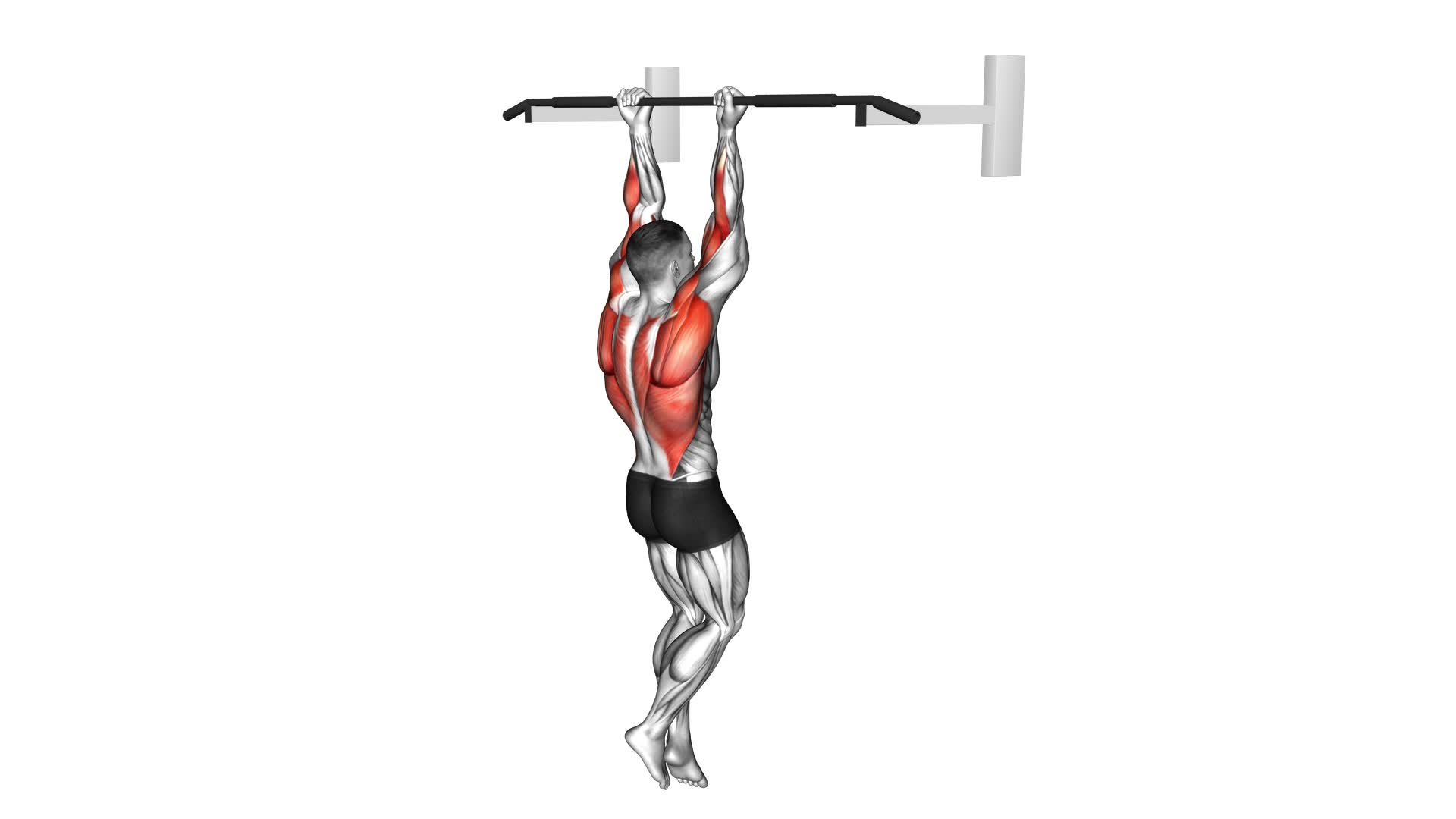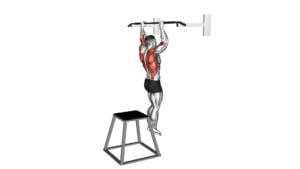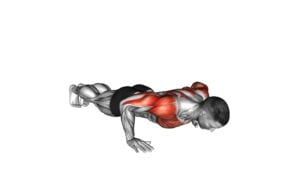Chin-Up (Izometric and Negative) – Video Exercise Guide & Tips

Are you looking to strengthen your upper body and improve your overall fitness? Look no further than chin-up exercises.
Watch This Exercise Video
In this video exercise guide, you'll find step-by-step instructions for isometric and negative chin-ups. By following proper form and technique, you can target your back, arms, and core muscles effectively.
Plus, we'll provide tips for progression and highlight common mistakes to avoid.
Get ready to take your chin-up game to the next level!
Key Takeaways
- Chin-up exercises engage multiple muscles in the upper body
- Proper form and technique are crucial for maximum benefits
- Different chin-up grips target specific muscles
- Incorporating negative chin-ups can help build strength and muscle endurance
Benefits of Chin-Up Exercises
Experience the numerous benefits of chin-up exercises for your upper body strength and muscle development.
Chin-ups are a powerful exercise that engage multiple muscles in your upper body, making them an effective way to build strength and increase muscle mass.
One of the key benefits of chin-up exercises is the muscle activation they provide. When you perform a chin-up, your biceps, back muscles, and forearms are all activated, helping you develop a well-rounded upper body.
Additionally, chin-ups can be modified and varied to target specific muscles or accommodate different fitness levels. If you're a beginner, you can start with assisted chin-ups using a resistance band or a chin-up machine.
As you progress, you can challenge yourself by adding weight or trying different grip variations, such as wide grip or close grip chin-ups. These variations target different muscle groups and add variety to your workout routine.
Proper Form and Technique for Isometric Chin-Ups
To properly perform isometric chin-ups, you should ensure that you maintain a static position at the top of the movement for a specific duration. Isometric chin-ups are a great exercise for building strength and stability in your upper body. When performing isometric chin-ups, you activate several key muscles, including your biceps, lats, and upper back.
The isometric hold at the top of the movement engages these muscles and helps to develop strength and endurance. It's important to focus on proper form and technique to maximize the benefits of this exercise.
There are also variations of chin-up grips that you can incorporate into your isometric chin-up routine. The most common grip is the underhand supine grip, also known as the chin-up grip. This grip targets the biceps and upper back muscles. The overhand pronated grip, also known as the pull-up grip, places more emphasis on the latissimus dorsi and upper back muscles. You can also try the neutral grip, where your palms face each other, to engage your biceps and forearms.
Step-by-Step Guide to Performing Negative Chin-Ups
To perform negative chin-ups, start by gripping the bar with your hands shoulder-width apart. Here is a step-by-step guide to help you execute this exercise correctly:
- Start from the top: Jump or use a box to get into the top position of a chin-up, with your chin above the bar and your elbows bent.
- Slowly lower yourself down: Focus on controlling the descent as you lower your body, taking about 5 seconds to reach the bottom position. Keep your core engaged and maintain tension in your upper body.
- Use your muscles: Throughout the negative chin-up, engage your back and arm muscles to resist gravity and maintain control. This will help to build strength and stability in your upper body.
- Repeat for desired reps: Aim to perform 3-5 negative chin-ups per set, gradually increasing the number as you build strength.
Incorporating negatives into your chin-up routine offers several benefits. It helps to build strength and muscle endurance, particularly in the muscles of the back, arms, and shoulders. Negatives also improve your grip strength and increase your overall pulling power. Additionally, by focusing on the eccentric portion of the exercise, negatives allow you to work on perfecting your form and technique, which can lead to better performance in other variations of chin-up exercises.
Tips for Progressing and Increasing Difficulty
To continue progressing and increasing the difficulty of your negative chin-ups, it's important to focus on proper form and gradually challenge your muscles. Here are some progression tips and advanced variations to help you take your chin-up game to the next level.
Firstly, you can start by increasing the number of repetitions you perform during each set. Aim to add one or two more reps each week to gradually build strength and endurance. Additionally, you can try using a weighted vest or holding a dumbbell between your feet to increase the resistance and make the exercise more challenging.
Another way to progress is by incorporating advanced variations of the chin-up. One such variation is the L-sit chin-up, where you lift your legs up and hold them parallel to the ground throughout the exercise. This engages your core and adds an extra level of difficulty. You can also try the one-arm chin-up, which requires exceptional upper body strength and stability.
Remember to always prioritize proper form and technique over increasing difficulty. It's essential to maintain control and avoid any swinging or jerking movements. By following these progression tips and incorporating advanced variations, you'll continue to challenge your muscles and see improvements in your chin-up performance.
Common Mistakes to Avoid During Chin-Up Exercises
As you continue progressing and increasing the difficulty of your negative chin-ups, it's important to be aware of common mistakes to avoid during chin-up exercises. Here are four common mistakes you should watch out for to ensure you're performing chin-ups correctly:
- Incorrect grip positions: One of the most effective grip positions for chin-ups is the underhand grip, also known as the supine grip. This grip targets the biceps and upper back muscles more effectively. Avoid using an overhand grip, as it primarily engages the latissimus dorsi muscle and may not provide the desired results.
- Relying solely on arm strength: One common misconception about chin-up exercises is that it's purely an upper body exercise. In reality, chin-ups engage multiple muscle groups, including the back, shoulders, and core. It's important to engage the entire body and not just rely on arm strength to perform the exercise correctly.
- Swinging or using momentum: Another mistake to avoid is using momentum or swinging your body to complete the chin-up. This not only reduces the effectiveness of the exercise but also puts unnecessary strain on your joints. Focus on maintaining control and using your muscles to lift your body, rather than relying on momentum.
- Neglecting proper form: Maintaining proper form throughout the exercise is crucial to prevent injury and get the most out of your chin-ups. Avoid rounding your shoulders or arching your back, as this can strain your muscles and lead to discomfort. Keep your core engaged, chest lifted, and shoulder blades pulled down and back for optimal form.
Frequently Asked Questions
How Long Should I Rest Between Sets When Performing Chin-Up Exercises?
When performing chin-up exercises, it's important to consider the rest duration between sets. This allows your muscles to recover and ensures proper form throughout your workout.
The optimal rest duration for chin-up exercises varies depending on your fitness level and goals. Generally, a rest period of 1-3 minutes is recommended. However, it's important to listen to your body and adjust the rest duration accordingly.
Maintaining proper form and giving your muscles enough time to recover will help you achieve the best results.
Can Chin-Up Exercises Help Improve Grip Strength?
Chin-up exercises are excellent for improving grip strength. By regularly performing these exercises, you not only strengthen your upper body, but also develop a stronger grip. This is beneficial for overall upper body strength and can enhance your performance in chin-ups.
To further enhance grip strength, try incorporating techniques like using a thicker bar or using grip-enhancing tools. These methods can help you achieve better results and make your chin-up exercises more effective.
Are There Any Alternative Exercises That Can Help Strengthen the Same Muscles as Chin-Ups?
If you're looking for alternative exercises to strengthen the same muscles as chin-ups, there are several options available.
Pull-ups, lat pulldowns, and inverted rows are great choices that target your back, biceps, and grip strength.
Additionally, bent-over rows and dumbbell rows can also help work these muscle groups effectively.
Can Chin-Up Exercises Help With Weight Loss?
Chin-up exercises can be beneficial for weight loss.
By engaging multiple muscle groups, such as your back, biceps, and core, chin-ups can help increase your overall calorie burn and improve your metabolism.
Additionally, chin-up exercises for beginners can be modified to suit your fitness level, allowing you to gradually build strength.
To ensure proper form, focus on maintaining a straight body position, engaging your core, and using controlled movements throughout the exercise.
Is It Necessary to Use Any Additional Equipment or Accessories While Performing Chin-Up Exercises?
When performing chin-up exercises, it isn't necessary to use any additional equipment or accessories. However, incorporating resistance bands can offer several benefits.
They provide added resistance, helping to strengthen your muscles and increase the intensity of your workout. Additionally, they can assist you in performing proper form and technique, especially if you're a beginner or have limited upper body strength.
Remember to maintain a straight body position and engage your back and arm muscles while executing chin-ups without equipment.
Conclusion
In conclusion, chin-up exercises offer numerous benefits for strength and muscle development. By maintaining proper form and technique, individuals can effectively perform isometric chin-ups to target specific muscle groups.
Additionally, incorporating negative chin-ups into a workout routine can further enhance strength and endurance. Remember to progress gradually and avoid common mistakes to ensure optimal results.
With dedication and consistency, chin-up exercises can help individuals achieve their fitness goals.

Author
Years ago, the spark of my life’s passion ignited in my mind the moment I stepped into the local gym for the first time. The inaugural bead of perspiration, the initial endeavor, the very first surge of endorphins, and a sense of pride that washed over me post-workout marked the beginning of my deep-seated interest in strength sports, fitness, and sports nutrition. This very curiosity blossomed rapidly into a profound fascination, propelling me to earn a Master’s degree in Physical Education from the Academy of Physical Education in Krakow, followed by a Sports Manager diploma from the Jagiellonian University. My journey of growth led me to gain more specialized qualifications, such as being a certified personal trainer with a focus on sports dietetics, a lifeguard, and an instructor for wellness and corrective gymnastics. Theoretical knowledge paired seamlessly with practical experience, reinforcing my belief that the transformation of individuals under my guidance was also a reflection of my personal growth. This belief holds true even today. Each day, I strive to push the boundaries and explore new realms. These realms gently elevate me to greater heights. The unique combination of passion for my field and the continuous quest for growth fuels my drive to break new ground.



